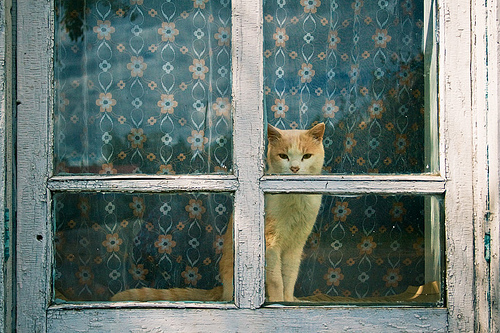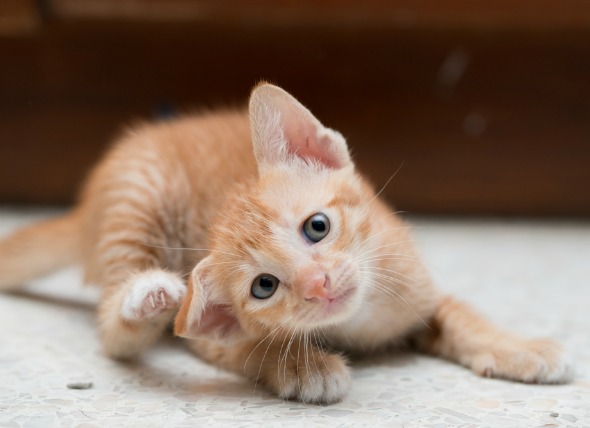Trimming Claws: All cats need their claws trimmed on a regular basis unless they have been declawed, and, in fact, keeping your cats nails trimmed on a regular basis may eliminate the need for declawing. If your cat's claws start snagging - on fabric or on you - it's a good indication that they need clipping. A pair of clippers designed especially for cats should be used and are available at pet stores.
Never use regular scissors as they can crush and injure your cat's claw. Since most cats will struggle when you clip their claws, it is wise to wear long sleeves and pants and wait until the cat is sleepy. If your cat is especially reluctant to have its claws clipped, you might need someone to hold it for you, while you do the clipping.
Otherwise, begin by holding your cat in your lap or on the floor between your knees. Make sure there is sufficient lighting and that you are familiar with the way the claws look. Pin the cat to your side with your arm and hold one of its front paws in your hand. Gently press on one toe until the claw pops into full view. Clip it, being careful not to cut into the quick, the slightly pinkish area containing nerves and blood vessels. When in doubt, trim less of the nail. Repeat with the next toe and so on. Don't forget the dewclaws - found only on the front paws - located right about where humans would have their thumbs.
Declawing: Careful consideration should be given to whether or not you declaw your cat. Declawing is the surgical removal of the claw and the surrounding tissue that it retracts into. Usually, only the front claws are removed, but sometimes the digits are removed as well. Declawing is often the last resort for cats who have become veteran scratchers of furnishings. Most cats can be trained from kittenhood not to scratch the furniture or to scratch a scratching post when they want exercise, but all cats will continue to scratch, with or without claws, as scratching is one way of marking their territory.
Before declawing, you might want to consider soft plastic covers for your cat's paws. In general, these should be put on by a vet and will last about a month, despite your cat's efforts to remove them. Used in conjunction with techniques to redirect clawing and scratching, covers for your cat's paws may serve as an alternative to declawing.
If your cat is consistently destroying your home furnishings and all other efforts have failed, you might want to have it declawed, but first there are a few things of which you should be aware. Declawed cats often compensate with their rear claws. They can still climb well, but their ability to defend themselves will be impaired. Declawed cats should not be allowed outside without supervision. Some declawed cats will become biters when they discover that their claws no longer work. Others may begin to growl.

 Cats & Babies - Can They Co Exist?
Cats & Babies - Can They Co Exist? There are many varied
Cats & Babies - Can They Co Exist?
Cats & Babies - Can They Co Exist? There are many varied
 Cat Rubbing - Why Does My Cat Do That?
Cat Rubbing - Why Does My Cat Do That? Every cat owner has s
Cat Rubbing - Why Does My Cat Do That?
Cat Rubbing - Why Does My Cat Do That? Every cat owner has s
 Natural Ways to Manage Diabetes in Cats
By Aly Semigran
If your cat has been diagnosed wit
Natural Ways to Manage Diabetes in Cats
By Aly Semigran
If your cat has been diagnosed wit
 10 Tips for New Cat Owners
Important Things You Should Know B
10 Tips for New Cat Owners
Important Things You Should Know B
 How Did My Cat Get Fleas and/or Ticks?
By Jennifer Kvamme, DVM
If you are a
How Did My Cat Get Fleas and/or Ticks?
By Jennifer Kvamme, DVM
If you are a